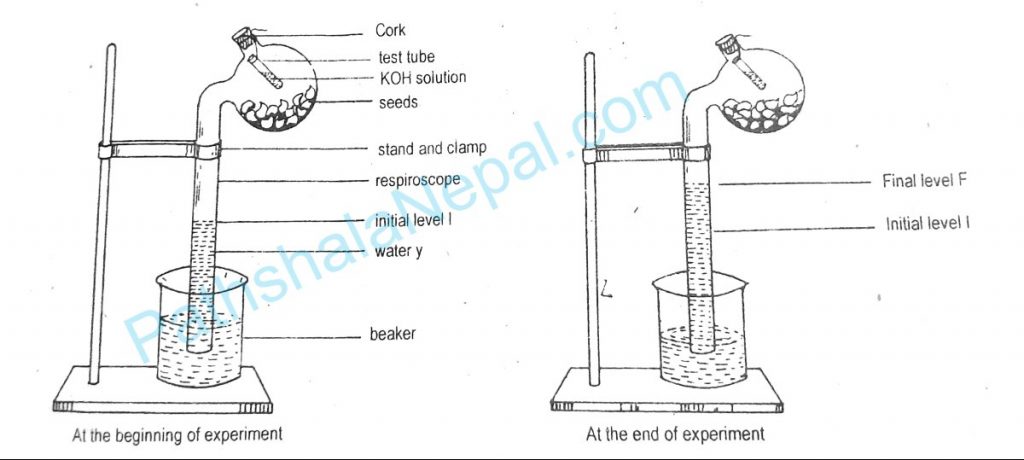Define aerobic respiration and highlight the major steps of this process.
1 Answer
Respiration is the physiological process in which complete and incomplete oxidation of organic food takes place. In respiration, the oxidation of various organic food substances like carbohydrates may take place. The process of respiration occurs in all living cells of old plants and animals and generally called cellular respiration. It is a catabolic process that occurs in mitochondria and cytoplasm of the cell and represented by the following chemical equation.
C6H12O6 + 6O2 → 6CO2 + H20 + Energy (2868KJ or 686Kcal)
The main facts associated with respiration are
- Consumption of atmospheric oxygen.
- Release of energy by break down of organic food.
- Liberation of carbon dioxide and a small quantity of water.
- Oxidation and decomposition of reserved food.
Types of respiration: Based on the availability of oxygen during the process, respiration can be classified into two types
- Aerobic respiration:
Respiration occurs in the presence of oxygen and organic food material is completely oxidized into CO2 and H2O with the release of energy is called aerobic respiration.
C6H12O6 + 6O2→6CO2 + H2O + energy (2868KJor 686Kcal
Steps in Aerobic Respiration: Aerobic respiration is a biological process that takes energy from glucose and other organic compounds to create a molecule called ATP. ATP is then used as energy by nearly every cell in the body. Aerobic respiration has four stages. Glycolysis, formation of acetyl coenzyme A the citric acid cycle, and the electron transport chain.
Step 1: Glycolysis: The first step of aerobic respiration is glycolysis. This step takes place within the cytoplasm of the cell and is actually anaerobic, meaning it does not need oxygen. During glycolysis, the breakdown of glucose takes place in pyruvic acids with the release of energy in the form of ATP and NADH molecules.
Step 2: Formation of Acetyl Coenzyme A: The next step in aerobic respiration is the formation of acetyl coenzyme A. in this step pyruvate is brought into the mitochondria to be oxidized, creating a 2-carbon acetyl group. This 2-carbon acetyl group then binds with coenzymes A, forming acetyl coenzyme A. the acetyl-coenzyme A is then brought back into the mitochondria for use in the next step.
Step 3: Kreb’s Cycle or Citric acid cycle: The third step of aerobic respiration is called the citric acid cycle. It is also called Kreb’s cycle. Here oxaloacetate combines with the acetyl coenzyme A, creating citric acid. Two turns of the citric acid cycle are required to break down the original acetyl coenzyme A from the single glucose molecule. These two cycles create an additional two ATP molecules, as well as six NADH and two FADH molecules, all of which are used later.
Step 4: Electron Transport Chain: The final step in aerobic respiration is the electron transport chain. In this phase, the NADH and FADH donate their electrons to make a large amount of ATP. One molecule of glucose a total of 34 ATP molecules.


